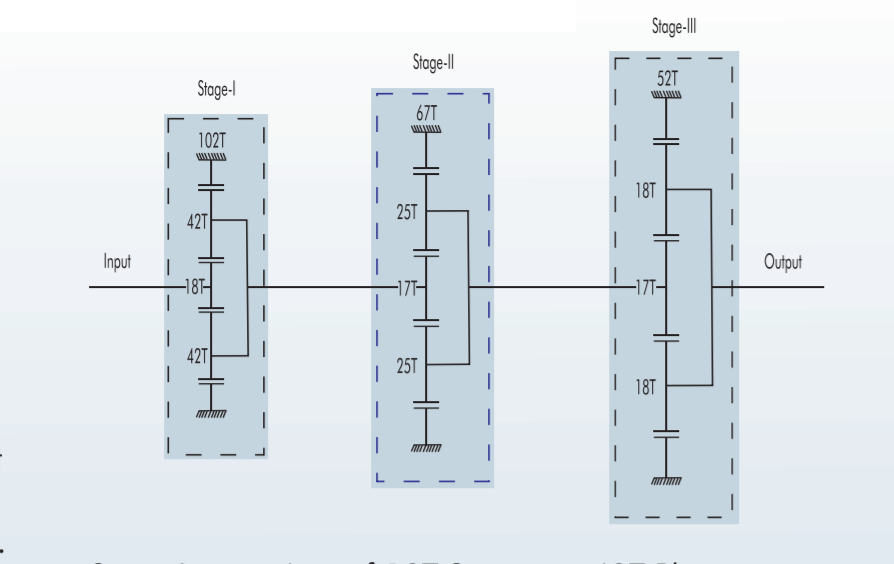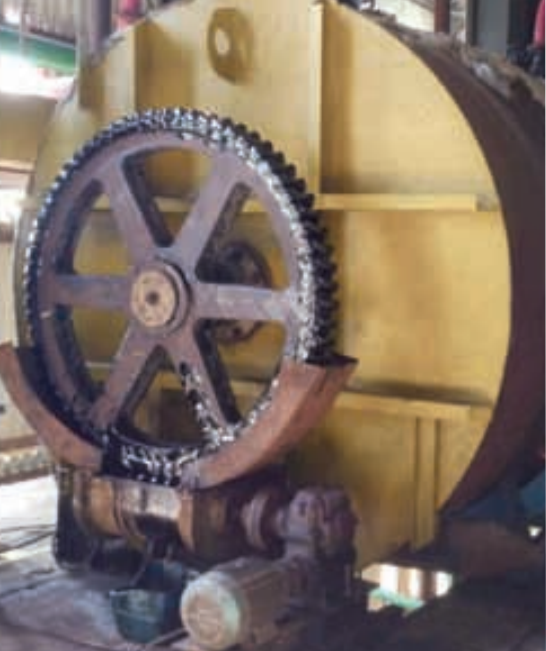A large family of gear arrangements is categorised under the general name of EPICYCLIC GEARING, An Epicyclic gear train has a central SUN gear, several PLANET gears meshing with & spaced around the Sun gear and a RING gear, also referred as an ANNULUS gear. Sun & Planet gears are externally toothed while Ring gear is internally toothed. The name Epicyclic comes from the fact that the points on the Planet trace epicycloidal curves in space. Stationery or rotating Sun gear, Planet gears and Ring gear result in different Epicyclic gear arrangements, one of them is termed as PLANETARY GEAR TRAIN.
A typical Planetary Gear Train arrangement is depicted below.
The speed reduction ratio of a Planetary transmission is function of the number of teeth on the Sun gear (Zs) and the number of teeth on the Ring gear (Zr) and is given by the equation (Zr/Zs) +1. A single-stage Planetary gear train normally gives a reduction ratio from 3:1 to 10:1. For obtaining higher reduction ratios multiple stages of Planetary configurations are adopted.
Sun gear acts as an input to the gear train, three Planets connected to the common member called PLANET CARRIER acts as output of the gear train, and a fixed Ring gear acts as body or housing of the gear train.
Turning of Sun gear results in movement of Planet gears on their own axis as well as around the Sun gear when Ring gear acts as a stationary element. The motion of these Planet gears are very similar to the motion of planets in the Solar System, and so the name PLANETARY GEAR TRANSMISSION.
By virtue of this typical gear train arrangement, Planetary Gear Drives are of co-axial configuration having input & output shafts rotating in the same direction.
Generally three Planet configuration is adopted, although any number of Planets can be considered. Higher number of Planet gears offers advantage of reduced teeth load, but such configurations suffer from certain manufacturing complexities, and hence are not very popular for general purpose Planetary Transmissions.
Use of the spur gears is more common for general purpose Planetary Gear Transmissions, while some customised high-speed Planetary Transmissions have Helical Gears.




